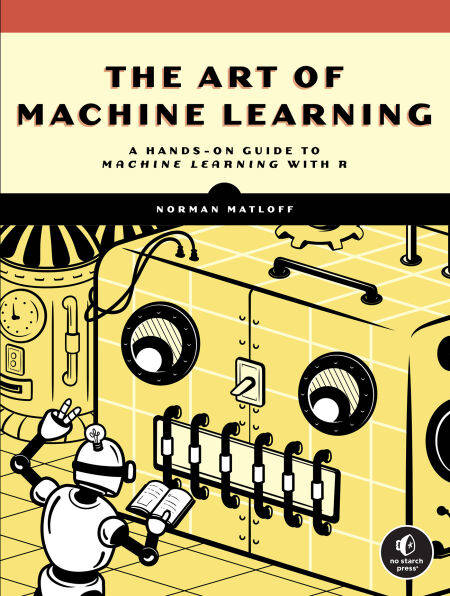
- Afhalen na 1 uur in een winkel met voorraad
- Gratis thuislevering in België vanaf € 30
- Ruim aanbod met 7 miljoen producten
- Afhalen na 1 uur in een winkel met voorraad
- Gratis thuislevering in België vanaf € 30
- Ruim aanbod met 7 miljoen producten
Zoeken
The Art of Machine Learning E-BOOK
A Hands-On Guide to Machine Learning with R
Norman Matloff
E-book | Engels
€ 39,42
+ 39 punten
Uitvoering
Omschrijving
Learn to expertly apply a range of machine learning methods to real data with this practical guide.
Packed with real datasets and practical examples, The Art of Machine Learning will help you develop an intuitive understanding of how and why ML methods work, without the need for advanced math.
As you work through the book, you’ll learn how to implement a range of powerful ML techniques, starting with the k-Nearest Neighbors (k-NN) method and random forests, and moving on to gradient boosting, support vector machines (SVMs), neural networks, and more.
With the aid of real datasets, you’ll delve into regression models through the use of a bike-sharing dataset, explore decision trees by leveraging New York City taxi data, and dissect parametric methods with baseball player stats. You’ll also find expert tips for avoiding common problems, like handling “dirty” or unbalanced data, and how to troubleshoot pitfalls.
You’ll also explore:
How to deal with large datasets and techniques for dimension reduction Details on how the Bias-Variance Trade-off plays out in specific ML methods Models based on linear relationships, including ridge and LASSO regression Real-world image and text classification and how to handle time series data
Machine learning is an art that requires careful tuning and tweaking. With The Art of Machine Learning as your guide, you’ll master the underlying principles of ML that will empower you to effectively use these models, rather than simply provide a few stock actions with limited practical use.
Requirements: A basic understanding of graphs and charts and familiarity with the R programming language
Packed with real datasets and practical examples, The Art of Machine Learning will help you develop an intuitive understanding of how and why ML methods work, without the need for advanced math.
As you work through the book, you’ll learn how to implement a range of powerful ML techniques, starting with the k-Nearest Neighbors (k-NN) method and random forests, and moving on to gradient boosting, support vector machines (SVMs), neural networks, and more.
With the aid of real datasets, you’ll delve into regression models through the use of a bike-sharing dataset, explore decision trees by leveraging New York City taxi data, and dissect parametric methods with baseball player stats. You’ll also find expert tips for avoiding common problems, like handling “dirty” or unbalanced data, and how to troubleshoot pitfalls.
You’ll also explore:
How to deal with large datasets and techniques for dimension reduction Details on how the Bias-Variance Trade-off plays out in specific ML methods Models based on linear relationships, including ridge and LASSO regression Real-world image and text classification and how to handle time series data
Machine learning is an art that requires careful tuning and tweaking. With The Art of Machine Learning as your guide, you’ll master the underlying principles of ML that will empower you to effectively use these models, rather than simply provide a few stock actions with limited practical use.
Requirements: A basic understanding of graphs and charts and familiarity with the R programming language
Specificaties
Betrokkenen
- Auteur(s):
- Uitgeverij:
Inhoud
- Aantal bladzijden:
- 272
- Taal:
- Engels
Eigenschappen
- Productcode (EAN):
- 9781718502116
- Verschijningsdatum:
- 8/01/2024
- Uitvoering:
- E-book
- Formaat:
- ePub

Alleen bij Standaard Boekhandel
+ 39 punten op je klantenkaart van Standaard Boekhandel
Beoordelingen
We publiceren alleen reviews die voldoen aan de voorwaarden voor reviews. Bekijk onze voorwaarden voor reviews.








